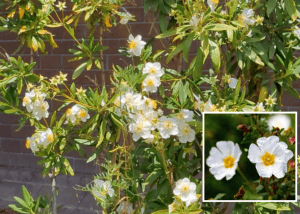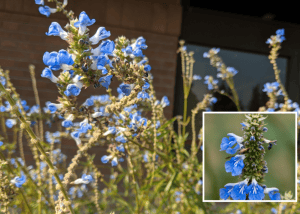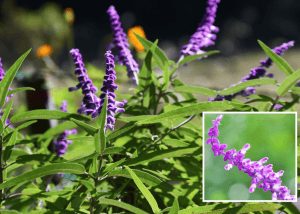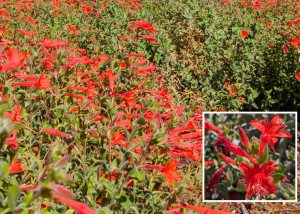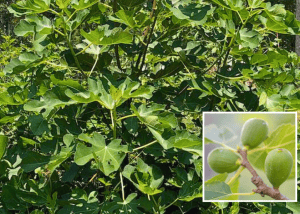Petaluma Library Living Learning Landscape
📍100 Fairgrounds Drive, Petaluma CA 94952
WELCOME TO THE LIVING, LEARNING LANDSCAPE
This vibrant demonstration garden is located behind the Petaluma Regional Library. Take a stroll through the garden and you might find seasonal fruits ready to harvest, or herbs to add to your dinner. With colorful water-wise blooms most notably in shades of pink, yellow and purple, you’re sure to see happy butterflies, bees, and hummingbirds all around you! Sit on one of the benches below the shade of the mulberry tree, or bring your children to read the Story Walk provided by the Library.
HISTORY OF THE GARDEN
Daily Acts partnered with the Petaluma Regional Library and the City of Petaluma in 2017 to transform a portion of lawn into a lush water-wise garden that grows food, habitat, and community. In October 2017, volunteers sheet mulched the lawn in preparation for planting. Then in March 2018, volunteers planted native and drought-tolerant plants and installed drip irrigation.
SEASONAL MAINTENANCE GUIDE
Learn all about how to maintain this beautiful water-wise garden! If you’re feeling inspired to get your hands in the dirt, you can use this guide to go out on your own, or you can join Daily Acts Staff during our monthly workdays.
PLANT LIBRARY
Take yourself on a tour of our demonstration garden by using our plant library below to identify plants as you go! If you’re interested in using some of these plants at your home garden, this is a great opportunity to see what they look like once they are established. Learn all about our favorite water-wise plants including whether they fruit and/or flower, their sunlight needs, and their watering needs.
RAIN GARDEN TOUR AT THE LIVING, LEARNING LANDSCAPE
Our demonstration garden at the Petaluma Library includes a beautiful rain garden! The addition of rain gardens and swales in your landscape offers two simple ways to increase stormwater capture and recharge our aquifers. These strategically designed low depressions and channels create holding places for water to collect and sink rather than run off over heavily saturated soils or impermeable surfaces.
While both of these features can function well with a dry riverbed look, incorporating water-wise plantings will increase both the aesthetics and the benefits. The use of native plants in particular can provide much needed habitat, slowing the water and acting as bio-filters for harmful pollutants all at the same time. Be sure to place plants best suited to wet conditions in the center, moving from seasonally wet preferences into dry conditions towards the edges for best results.
LANDSCAPE TRANSFORMATION IMPACTS



